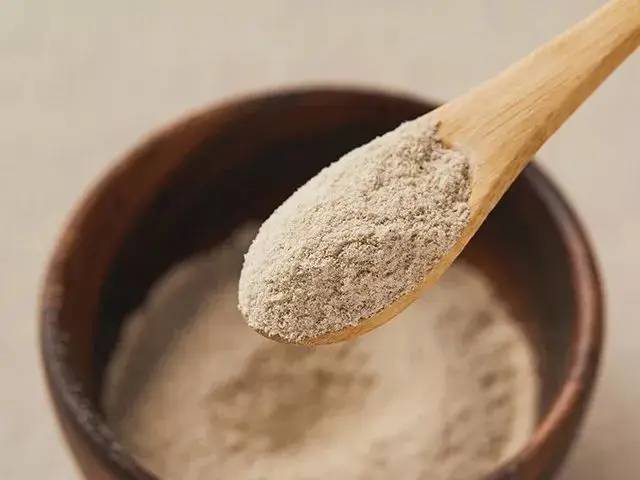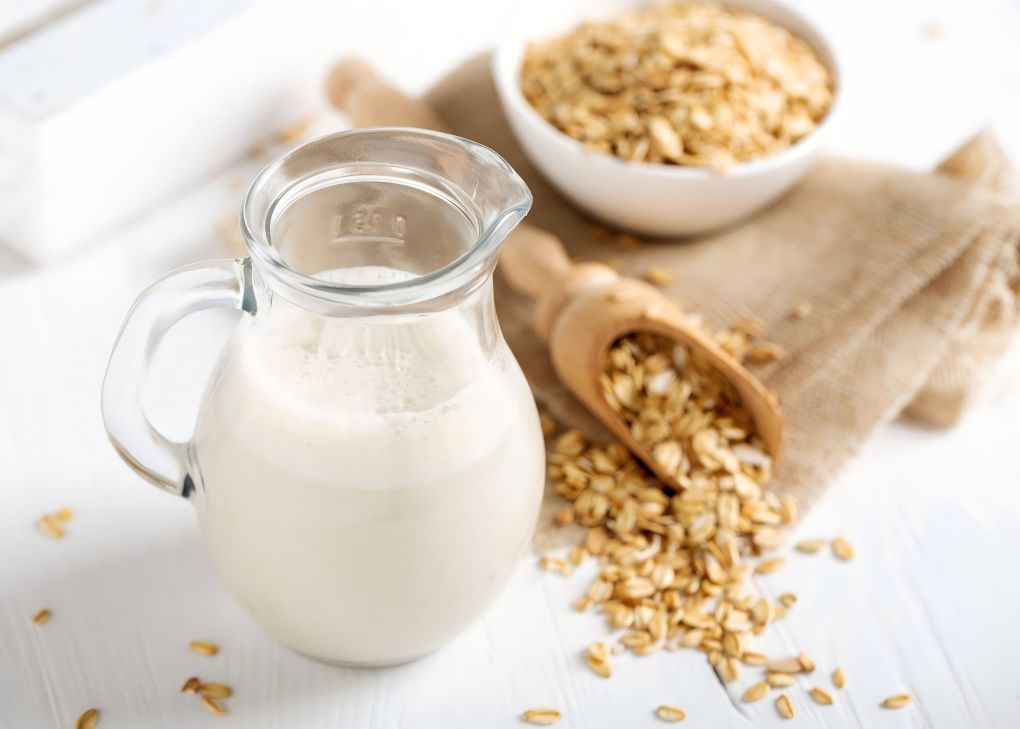What is the benefit of Oat Beta Glucan for Hypoglycemia?
Oat β-glucan is a soluble dietary fiber that is mainly found in the endosperm and aleurone layer cell walls of oats. It is a non-starch polysaccharide composed of glucose linked by β-(1→ 3) and β-(1→ 4) glycosidic bonds. It has a variety of physiological effects, including lowering blood sugar [1-3]. Regular consumption of oat products can effectively reduce the risk of cardiovascular and cerebrovascular diseases, diabetes, and hypertension. Its hypoglycemic effect has been recognized by the US Food and Drug Administration (FDA) [4].
Diabetes is a group of metabolic diseases characterized by high blood sugar. According to statistics, the number of adult diabetes patients is increasing year by year (451 million in 2017, expected to reach 700 million in 2045)[5], 90% of whom have type 2 diabetes[6]. Nutritional therapy plays a very important role in the prevention and treatment of type 2 diabetes, which can reduce the glycated hemoglobin level of type 2 diabetes patients by 0.5% to 2.0% [7]. Eating foods rich in fiber is one of the typical nutritional therapies [8-9]. Therefore, eating oat products rich in oat beta-glucan can significantly reduce the blood glucose index of type 2 diabetes.
This article first reviews the hypoglycemic effect of oat β-glucan, then describes the internal structure and external influencing factors that affect the hypoglycemic effect of oat β-glucan, and finally briefly introduces the mechanism of action of oat β-glucan in lowering blood sugar, in the hope of providing a reference for follow-up research.
1. The hypoglycemic effect of oat β-glucan
Oat β-glucan can lower the glycemic index (GI) of foods. After consumption, it can delay the digestion and absorption of starch by reducing the activity of amylase, thereby achieving a hypoglycemic effect.
1.1. The effect of oat β-glucan on the glycemic index of foods
The glycemic index (GI) is the ratio of the increase in blood glucose after eating a food to the increase in blood glucose from a standard food (usually glucose). Some studies have found that adding oat beta-glucan can significantly reduce the GI of foods [10-12]. 1 g of oat beta-glucan can reduce the GI of 50 g of carbohydrates by 4 units [10]. Make- lainen et al. [13] and Kim et al. [14] reported that the GI of foods tends to decrease with increasing oat β-glucan content [12]. Kim et al. [15] also reported that after the addition of β-glucan, the GI value of starch showed a downward trend with an increase in molecular weight and an increase in viscosity. This shows that oat β-glucan can significantly reduce the GI, and that the effect of oat β-glucan on the GI is correlated with factors such as molecular weight and content.
1.2 Effect of oat β-glucan on blood glucose
Postprandial blood glucose, i.e. the blood glucose level two hours after a meal, is a basic monitoring indicator for diagnosing diabetes and is of great reference value for improving blood glucose metabolism. Oats are rich in oat β-glucan and have the ability to improve postprandial blood glucose and fasting blood glucose.
Oat β-glucan can significantly reduce postprandial blood glucose. A breakfast cereal rich in 4 g of oat beta-glucan can reduce postprandial blood glucose by 38% [16]. A bedtime snack containing 1.8 g of oat beta-glucan can significantly reduce postprandial blood glucose in children with type 2 diabetes [17]. Adding 6% oat beta-glucan to the diet can lower postprandial blood glucose in experimental pigs [18].
Zhang Jie [19] found through in vivo digestion experiments that oat beta-glucan can effectively reduce the peak of postprandial blood glucose in mice. There is a certain quantitative relationship between the content of oat beta-glucan and its hypoglycemic effect. Zhang Yu[20] pointed out that oat β-glucan has a significant effect on delaying glucose absorption and lowering postprandial blood glucose. The molecular weight and content of oat β-glucan can affect postprandial blood glucose. At high molecular weight (5 750 × 10 3 g · mol -1 ) and high dose (2 000 mg · (kg · bw) -1 ), oat oat β-glucan has the best effect of lowering postprandial blood glucose. Although a high dose (2000 mg·(kg·bw)-1) of oat β-glucan can significantly reduce postprandial blood glucose in experimental type 2 diabetic mice, and the blood glucose reduction becomes more pronounced with prolonged administration, it cannot be reduced to normal blood glucose levels, indicating that oat β-glucan can only have a supplementary hypoglycemic effect [21 ].
The adsorption capacity of oat beta-glucan for glucose and its effect on the rate of glucose diffusion are closely related to its ability to reduce postprandial blood glucose in the body. Zhang Yu[20] also pointed out that oat beta-glucan with a high molecular weight (5750×103 g·mol-1) and a high dose (2000 mg·(kg·bw)-1) has a better adsorption effect on glucose, can significantly slow down the diffusion rate of glucose, and the reduced absorption rate of glucose by the body can also significantly reduce the body's postprandial blood glucose levels.
Oat β-glucan can also effectively reduce the body's fasting blood glucose[22] . After mice were given oat β-glucan by gavage for 4 weeks, their fasting blood glucose levels showed a downward trend (from 11.8±1.2 mmol·L-1 to 9.8±0.8 mmol·L-1) [20]. However, other studies have shown that the efficacy of oat β-glucan in lowering fasting blood glucose has a low threshold [19] , and under the same high molecular weight conditions, the medium dose (1 000 mg · (kg · bw) -1 ) and high dose ( 2 000 mg · (kg · bw) -1 ) of oat beta-glucan have a stronger ability to lower fasting blood sugar [2] .
1.3 Enzyme activity and the effect of insulin on blood glucose
The rate and extent of starch digestion are the main determinants of blood glucose levels in the body [23]. Therefore, reducing the activity of α-amylase and delaying the digestion and absorption of starch can indirectly lower blood glucose. Increasing the content of oat β-glucan can inhibit the activity of α-amylase [20], but when the content of oat β-glucan reaches a certain concentration (30 mg·mL-1), the inhibition of α-amylase is more effective [19]. In vitro starch digestion curves show that the greater the content of oat β-glucan, the stronger the ability to inhibit starch digestion [20].
Studies have shown that when the activity of sucrase and maltase decreases, the absorption of glucose by small intestinal epithelial cells also decreases significantly. Oat β-glucan inhibits the activity of disaccharidases to a certain extent, and high molecular weight (5 750 × 103 g · mol-1) oat β-glucan has the highest inhibitory effect on sucrase and maltase , which are 23.15% and 10.40% respectively [20]. Oat β-glucan can effectively inhibit the activity of pepsin, but as digestion time increases, its inhibitory effect will weaken [24]. Na+ /K+ -ATPase is an indicator of the small intestine's ability to absorb glucose. Studies have shown that oat β-glucan can significantly reduce the activity of Na+ /K+ -ATPase in the small intestine, i.e., reduce the body's ability to absorb glucose . However, no dose-effect relationship was observed [20]. In addition, oat β-glucan can inhibit the activity of glucose-6-phosphatase (G-6-Pase), which slows down the conversion of liver glycogen and thus reduces blood glucose levels. 4% oat β-glucan can already cause a downward trend in G-6-Pase activity [19-20].
Serum insulin is a hormone that can directly lower blood glucose, so changes in insulin secretion (Fins) can be used to indirectly reflect the effect of oat beta-glucan on blood glucose. Wang Haibo [25] reported that Fins increased significantly in diabetic mice after being given oat beta-glucan by gavage. Cai Fengli [21] found that after 6 weeks of administering oat β-glucan to diabetic mice, their Fins increased significantly, and the high dose (2,000 mg · (kg · bw) -1) of oat β-glucan had the best effect on raising Fins. Although oat β-glucan can greatly raise Fins, but when the molecular weight is the same, changing the content of oat beta-glucan has almost no effect on Fins[20].
2. Factors influencing the hypoglycemic properties of oat beta-glucan
Oat β-glucan exerts its hypoglycemic effect by forming a highly viscous environment in the intestines. The viscosity of oat β-glucan is determined by its molecular weight and content. Therefore, the hypoglycemic effect of oat β-glucan is related to its structural factors—molecular weight and content. In addition, the variety of oats and the processing method of oat products also have an impact on the hypoglycemic effect of oat β-glucan.
2.1 The effect of molecular weight and content of oat β-glucan on its hypoglycemic effect
The hypoglycemic effect of oat β-glucan is mainly affected by viscosity, while molecular weight (Mw) and content can affect viscosity [26]. A large number of studies have shown that changes in blood glucose and insulin are related to the content and molecular weight of oat β-glucan, and that as the viscosity of foods rich in oat β-glucan increases, their hypoglycemic effect is significantly enhanced [27], and the GI decreases significantly [28]. Moreover, the viscosity of β-glucan tends to increase with its molecular weight and content [29].
Therefore, the hypoglycemic ability of oat β-glucan is closely related to its molecular weight and content. The higher the molecular weight of oat β-glucan, the more significant its effect on lowering fasting blood glucose and controlling postprandial blood glucose [20]. Shen Nanhui [30] found that a high molecular weight (Mw = 70 000 Da) oat beta-glucan drink reduced postprandial blood glucose more effectively than a low molecular weight (Mw = 40 000 Da) beta-glucan drink. Lazaridou et al. [31] found that the postprandial glucose-lowering effect of muffins containing oat beta-glucan decreased significantly (from 45% ± 6% to 15% ± 6%) as the molecular weight of the beta-glucan decreased from 2000 kDa to 130 kDa. Rigand et al. [32] reported that as the molecular weight of oat β-glucan increases, the degree of hydrolysis of starch during in vitro digestion decreases, thereby achieving the effect of lowering blood sugar.
In addition, the viscosity of oat beta-glucan can also affect its blood glucose-lowering effect. High doses of oat beta-glucan can significantly regulate blood glucose, and a certain dose-response relationship has been observed [33]. Muffins containing 8 g of oat beta-glucan have a significantly greater blood glucose-lowering effect than those containing 4 g of oat beta-glucan [31]. In addition, when the oat beta-glucan/starch ratio was increased from 1.1:10 to 1.6:10, its inhibitory effect on peak blood glucose was significantly enhanced [32]. However, some studies have also pointed out that when the molecular weight is the same, the hypoglycemic effect of 250 mL and 600 mL beverages with the same β-glucan content is similar, which indicates that increasing the viscosity by reducing the volume of the solution has no effect on the hypoglycemic effect of oat β-glucan [26].

2.2 Effect of processing methods on the hypoglycemic effect of oat β-glucan
The molecular weight of β-glucan depends on the type of oat, the growing environment, the food matrix and the processing method. The processing method modifies β-glucan, changing its molecular weight and viscosity, and thus its hypoglycemic effect [34-35]. After the grains of different varieties of naked oats were polished, the oat β-glucan content in most varieties increased, but the oat β-glucan content in a small number of varieties decreased. This was because the hardness and moisture content of the grains varied between varieties, and there was severe damage during the polishing process [36]. Tosh et al. [37] reported that processing methods and cooking methods caused the gelatinization, which in turn led to a large difference in GI.
Granfeldt et al. [38] tested the responses of nine elderly people to oatmeal, cooked oatmeal, cooked whole oats, and white bread, and found that cooked whole oats caused lower postprandial blood glucose and insulin responses than white bread. The GI value of oatmeal cooked at atmospheric pressure for 80 min (62) is higher than that of oatmeal cooked for 20 min (49), indicating that both the proportion of water added and the cooking time affect the GI value of oat foods, resulting in differences in their blood glucose-lowering ability [39-40]. The water temperature used to prepare the porridge also significantly affects the hypoglycemic effect of oat flour. Studies have shown that the higher the final temperature of the porridge, the higher the GI of the oat porridge [39]. Since different processing methods of oatmeal affect the natural physical integrity of oats differently, and the integrity of the structure affects the GI of oats, the GI of instant oatmeal and ready-to-eat oatmeal (71 and 75, respectively) is significantly higher than that of steel-cut oats and thick oatmeal (55 and 53, respectively) [37, 41-43]. . Fang Haibin et al. [44] reported that consumption of pearl barley and oat puffed food can effectively inhibit blood glucose elevation in rats (blood glucose value decreased from 5.537 mmol·L-1 to 4.834 mmol·L-1).
Zhang Yan et al. [45] also found that after oat groats were processed using the “three-cooked” process (fried, boiled, and steamed), frying had a significant effect on the β-glucan content of oat groats. New types of drinks made from oats are a new type of oat food in China, but the β-glucan content of oat milk made from different varieties of oats varies significantly, ranging from 11.17 to 98.21 mg · (100 mL) -1. At the same time, the sieving process can reduce the β-glucan content of oat milk by 56.3 2% [46] . Oat rice is a low GI food with a GI of 50.25. Experiments have shown that patients' postprandial blood glucose (10.25±3.42 mmol·L-1) after eating oat rice is significantly lower than that after eating ordinary rice (13.01±5.11 mmol·L-1) [41]. Ames et al. [47] compared the blood glucose-lowering effects of 92 oat foods and concluded that the blood glucose-lowering ability of oat foods depends on the content of β-glucan in the food, the food formulation and the processing method.
In summary, the ability of oat β-glucan to lower blood glucose is closely related to the viscosity it forms in solution. The viscosity of oat β-glucan is determined by its molecular weight. Therefore, the blood glucose-lowering effect of oat β-glucan depends on the variety of oats and is also affected by the food processing.
3 The hypoglycemic mechanism of oat β-glucan
Although it is difficult to study the hypoglycemic mechanism of oat β-glucan, it is of great significance and importance for the rational use of oat β-glucan. At present, the common hypoglycemic mechanisms of oat β-glucan include slowing gastrointestinal emptying, inhibiting the activity of digestive enzymes, and improving islet function. The mechanism of slowing down gastrointestinal emptying is that oat β-glucan can form a high-viscosity environment in the gastrointestinal tract.
Its high viscosity can form a physical barrier to prevent food and digestive enzymes from contacting each other, prolong gastric emptying, and reduce the contractility of the small intestine, slowing down the rate of glucose absorption and achieving the effect of lowering postprandial blood glucose response [48-50]. Wang Haibo[23] found that oat β-glucan can inhibit the hydrolysis of amylase to reduce the blood glucose response. Medium to high doses of oat β-glucan can inhibit the activity of sucrase and maltase, slow down starch digestion and absorption and glucose absorption, and indirectly lower postprandial blood glucose levels [51]. Oat β-glucan can also lower blood glucose by improving islet function, inhibiting the release of serum insulin, and thereby reducing the burden on islet cells [25].
Cai Fengli et al. [21] reported that oat β-glucan can improve the pancreatic pathology of experimental type 2 diabetic mice, control the level of islet cell apoptosis, increase the number of islet cells, thereby improving the normal function of the islets and cells of diabetic mice, promote insulin secretion, and effectively control blood sugar balance in the body. At the same time, oat β-glucan can also improve the histopathology of the liver, kidney and pancreatic tissues of diabetic mice liver, kidney and pancreatic histopathological structure, regulating the physiological functions of its vital organs, thereby promoting glycogen synthesis, improving the activity of succinate dehydrogenase in the tricarboxylic acid cycle, accelerating the oxidation of succinate, and reducing the toxic effects of glucose and free fatty acids on islet cells, thereby improving the body's ability to utilize glucose [21].
Zhang Jie et al. [19] found that oat β-glucan can promote glucose degradation by increasing hepatic glucokinase activity, increase glycogen synthesis, and maintain the binding and sensitivity of insulin to blood glucose molecules, so that the body's blood glucose can be maintained at a normal level. In addition, Lu Qihong [52] also found that oat β-glucan can improve the damage to pancreatic islet cells through its antioxidant capacity, thereby reducing oxidative damage in diabetic rats. In summary, although there have been many studies on the hypoglycemic mechanism of oat β-glucan, there is still no conclusive theory on its hypoglycemic mechanism, and further research is needed.
Reference:
[1]BALDASSANO S , ACCARDI G , VASTO S.Beta-glucans and cancer:The influence of inflammation and gut peptide [J] . Eu- ropean JournalofMedicinalChemistry , 2017 , 142(15) :489.
[2]LIU M , ZHANG Y , ZHANG H , et al.The anti-diabetic activi- ty of oat β-d-glucan in streptozotocin-nicotinamide induced di- abetic mice [J] . International Journal of Biological Macro - molecules , 2016 , 91 : 1174.
[3] AOE S , ICHINOSE Y , KOHYAMA N , et al.Effects of high beta-glucan barley on visceral fat obesity inJapanese subj ects : Arandomized double blind study [J] . Nutrition , 2017 , 42 : 1.
[4] FDA. Final rule for food labelling : Health claims ; Oats and coronary heart disease [J] . Federal Regulations , 1997,(62) : 3584-3681.
[5] International Diabetes Federation. Diabetes atlas , 8th edition [J] .Abu Dhabi:IDF , 2017.
[6] OZOUGWU J C , OBIMBA K C , BELONWU C D , et al.The pathogenesis and pathophysiology of type 1and type 2diabe- tes mellitus [J] . Journal of Physiology and Pathophysiolo- gy, 2013 , 4(4) :51.
[7] EVERT A B , BOUCHER J L , CYPRESS M , et al.Nutrition therapy recommendations for the management of adults with diabetes [J] . Diabetes Care , 2013 , 36(11) : 3821.
[8] KACZMARCZYK M M , MILLER M J , FREUND G G. The health benefits of dietary fiber: Beyond the usual suspects of type 2diabetes mellitus , cardiovascular disease and colon canc- er [J] . Metabolism , 2012 , 61(8) : 1058.
[9] DWORATZEK P D , ARCUDI K , GOUGEON R , et al.Nutri- tion therapy Canadian diabetes association clinical p ractice guidelines expert committee [J] . CanadianJournalof Diabe- tes , 2013 , 37 :45.
[10]JENKINS D.Depression of the glycemic index b y high levels of β-glucan fiber in two functional foods tested in type 2dia- betes [J] . European Journal of Clinical Nutrition , 2002 , 56 (7) : 627.
[11]EKSTRM L M N K , Bok E A E H , SJ M E , et al.Oat β- glucan containing bread increases the glycaemic p rofile [J] . Journalof Functional Foods , 2017 , 32 : 106.
[12]BRUMMER Y , DUSS R , WOLEVER T M S , et al.Glycemic response to extruded oat bran cereals p rocessed to vary in molecular weight [J] . CerealChemistry , 2012 , 89(5) :258.
[13] MKELINEN H , ANTTILA H , SIHVONEN J , et al.The effect of β-glucan on the glycemic and insulin index [J] . Eu- ropean Journalof Clinical Nutrition , 2007 , 61(6) :779.
[14] KIM H J , WHITE P J.In vitro digestion rate and estimated glycemic index of oat flours from typical and high β-glucan oat lines [J] . JournalofAgriculturalandFoodChemistry , 2012 , 60(20) :5240.
[15] KIM H J , WHITE P J.Impact of the molecular weight , vis- cosity, and solubility ofβ-glucan on in vitro oat starch digest- ibility [J] . Journal of Agricultural and Food Chemistry , 2013 , 61(13) :3270.
[16] TAPPY L , GUGOLZ E , WURSCH P . Effects of breakfast cereals containing various amounts of beta-glucan fibers on plasma glucose and insulin responses in NIDDM Subj ects [J] . Diabetes Care , 1996 , 19(8) :833.
[17] RAMI B , ZIDEK T , SCHOBER E.Influence of a β-glucan- enriched bedtime snack on nocturnal blood glucose levels in diabetic children [J] . Journal of Pediatric Gastroenterology and Nutrition , 2001 , 32(1) : 35.
[18] HOODA S , MATTE J J , VASANTHAN T , et al.Dietary oat beta-glucan reduces p eak net glucose flux and insulin p roduc- tion and modulates plasma incretin in portal-vein catheterized grower pigs [J] . Journalof Nutrition , 2010 , 140(9) : 1568.
[19] ZHANG J . Study on the effect of native oat β-glucan on starch digestion and metabolism of glucose and lipid [ D] . Wuxi:Jiangnan University, 2016.
[20] ZHANG Y.Study on the effect of oat β-glucan on starch di- gestion ,glucose adsorption and blood sugar [D] .Wuxi:Jiang- nan University, 2015.
[21] CAI F L.Research on hypoglycemic effect of oat p roducts and its mechanism [ D] . Zhengzhou : Zhengzhou University of Light Industry, 2011.
[22] HE L X , ZHAO J , HUANG Y S , et al. The difference be- tween oats andβ-glucan extract intake in the management of HbA1c , fasting glucose and insulin sensitivity : a metaanalysis of randomized controlled trials [J] . Food Function , 2016 , 7(3) : 1413.
[23] WANG H B , LIU D C , WANG H Y , et al. Effect of oat β- glucan on p eristalsis and am ylase activity of small intesting [J] .Acta Nutrimenta Sinica , 2006 , 28(2) : 150.
[24]QIAO YJ.Effectof oat β-glucan on p rotein digestion in vitro [D] .Hangzhou:Zhejiang Gongshang University, 2017.
[25]WANG H B , LIU D C , CUI B Z , et al.Effect study on oat β- glucan on blood sugar serum lipid and insulin of rats and dia- betes rats [J] . Food Science , 2004 , 25(7) : 173.
[26] KWONG M G Y , WOLEVER T M , BRUMMER Y , et al.In- creasing the viscosity of oat β-glucan beverages b y reducing solution volume does not reduce glycemic responses [J] . British Journalof Nutrition , 2013 , 110(8) : 1465.
[27] WOOD P J , BRAATEN J T , SCOTT F W , et al. Effect of dose and modification of viscous p rop erties of oat gum on plasma glucose and insulin following an oral glucose load [J] . British Journalof Nutrition , 1994 , 72(5) :734.
[28] WOOD P J , WEISZ J , BLACKWELL B A.Structural studies of (1 → 3) ,(1 → 4) -β-D-glucans b y 13C-nuclear magnetic resonance spectroscopy and b y rapid analysis of cellulose-like regions using high-p erformance anion-exchange chromatog- raphy of oligosaccharides released b y lichenase [J] . Cereal Chemistry , 1994 , 71(3) :306.
[29] REBELLO C J , CHU Y F , JOHNSON W D , et al.The role of meal viscosity and oat β-glucan characteristics in human appetite control : a randomized crossover trial [J] . Nutrition Journal , 2014 , 13(1) :54.
[30]BIRKLUND M , VAN REES A , Mensink R P , et al.Chan- ges in serum lipids and postprandial glucose and insulin con- centrations after consumption of beverages with β-glucans from oats or barley , a randomized dose-controlled trial [J] . European Journal of Clinical Nutrition , 2005 , 59 ( 11 ) : 1277.
[31] TOSH S M , BRUMMER Y , WOLEVER T M S , et al.Glyce- mic response to oat bran muffins treated to vary molecular weight of β-glucan [J] .CerealChemistry , 2008 , 85(2) :211.
[32] REGAND A , CHOWDHURY Z , TOSH S M , et al.The mo- lecular weight , solubility and viscosity of oat beta-glucan af- fect human glycemic response b y modifying starch digestibil- ity [J] . FoodChemistry , 2011 , 129(2) :297.
[33] SHEN N H.Study on hypoglycemic effect of oat beta-glucan in mice with diet-induced impaired glucose regulation[ D] . Chongqing:Chongqing University, 2014.
[34]LAZARIDOU A , BILIADERIS C G.Molecular aspects of ce- real β-glucan functionality : physical p rop erties , technological applications and physiological effects [J] . Journal of Cereal Science , 2007 , 46(2) : 112.
[35] AMAN P , RIMSTEN L , ANDERSSON R. Molecular weight distribution of β-glucan in oat-based foods [J] .Cereal Chem- istry , 2004 , 81(3) :359.
[36] DU W. Determination and analysis of β-glucan content in main naked oat varieties and oat p roducts in China [D] .Hu- hehaote:Inner Mongolia Agricultural University, 2018.
[37] TOSH S M , CHU Y F.Systematic review of the effect of p rocessing of whole-grain oat cereals on glycaemic response [J] . British Journalof Nutrition , 2015 , 114(8) : 1259.
[38] GRANFELDT Y , HAGANDER B , BJRCK I. Metabolic re- sponses to starch in oat and wheat p roducts. On the im por- tance of food structure , incom plete gelatinization or p resence of viscous dietary fibre [J] . European Journal of Clinical Nutrition , 1995 , 49 : 193.
[39] DONG Y , FAN Z H , LIU Y L.Starch fractions and glycemic response of roasted and powdered starchy foods [J] . Journal of Chinese InstituteofFoodScienceandTechnology , 2016 , 16(8) :265.
[40]JENKINS D J , WOLEVER T M , TAYLOR R H , et al.Gly- cemic index of foods : a physiological basis for carbohydrate exchange [J] . TheAmericanJournalof Clinical Nutrition , 1981 , 34(3) :363.
[41] HU L Y , WANG L L , HE F , et al.Determination of glycemic Index of oat-rice and intervention on type 2diabetes patients [J] . Parenteral & Enteral Nutrition , 2016 , 23(6) : 340.
[42] GIRARDET N , WEBSTER F H , et al.Oat milling : specifica- tions , storage and p rocessing [ M]//Oats , AACC Interna- tional.Elsevier Inc.2011 : 301.
[43] GRANFELDT Y , ELIASSON A C , BJORCK I.An examina- tion of the possibility of lowering the glycemic index of oat and barley flakes b y minimal p rocessing [J] . Journalof Nu- trition , 2000 , 130(9) :2213.
[44] FANG H B , KANG C Y , GUO M R , et al.Decreasing effects of puffed food of adlay seed and oat on the blood glucose and blood lipids of hyp erglycemic and hyp erlipidemic SD rat mod- el [J] . Journal ofAgriculturalUniversity of Hebei , 2018 , 41(6) :89.
[45] ZHANG Y , HU X Z , SHI J L , et al. The effects of three- thermal treatment on nutrient and p rocessing quality of Chi- nese oat tradition food [J] . Journal of The Chinese Cereals andOilsAssociation , 2013 , 28(10) :89.
[46] LU W.Quality and sultability for oat milk p rocessing of dif-ferent oat varieties [D] .Beijing:Chinese Academy ofAgricul- tural Sciences , 2013.
[47] AMES N , STORSLEY J , TOSH S.Effects of p rocessing on physicochemical p rop erties andefficacy ofβ-glucan , from oat and barley [J] .Cereal Foods World , 2015 , 60(1) :4.
[48]JUVONEN K R , KARHUNEN L J , VUORI E , et al.Struc- ture modification of a milk p rotein-based model food affects postprandial intestinal peptide release and fullness in healthy young men [J] . British Journal of Nutrition , 2011 , 106 (12) : 1896.
[49] KAY B A , TRIGATTI K , MACNEIL M B , et al.Pudding p roducts enriched with yellow mustard mucilage , fenugreek gum or flaxseed mucilage and matched for simulated intestinal viscosity significantly reduce postprandial p eak glucose and insulin in adults at risk for type 2diabetes [J] . Journal of Functional Foods , 2017 , 37 : 609.
[50]ZHANG J , LUO K , ZHANG G.Impact of native form oat β- glucan on starch digestion and postprandial glycemia [J] . Journalof Cereal Science , 2017 , 73 :84.
[51] DONG J , CAI F , SHEN R , et al. Hypoglycaemic effects and inhibitory effect on intestinal disaccharidases of oat beta-glu- can in streptozotocin-induced diabetic mice [J] . Food Chem- istry , 2011 , 129(3) : 1069.
[52] LU Q H.Study of oat β-glucan on glycemia in diabetic rats [D] . Shanghai : The Second Military Medical University , 2006.


 English
English French
French Spanish
Spanish Russian
Russian Korean
Korean Japanese
Japanese








